|
The Winter Beijing Olympics got me thinking about snow. Does artificial snow have the same varied and beautiful crystal structure as naturally occurring snow, I wonder? Maybe that’s possible. Who could have imagined once that the winter olympics would ever be held on virtually all artificial snow. Technology makes the unimaginable possible. Advances in technology were the key to a boom in snowflake crystal patterns in Japan during the late Edo period (1603-1867 ). When Doi Toshitsura (1789-1848), feudal chief of the Koga Domain, imported a microscope from the Netherlands, he was able to observe and make a detailed record of snowflake crystal patterns, and in 1832 he published his first collection of 86 types of snowflakes in a book called Snowflake Pictorial (『雪華図説』), followed by a second volume eight years later with 97 more. It was the first natural science publication on the topic of snow in Japan. Suzuki Bokushi, a merchant, folklorist and scholar in Niigata, mentioned Snowflake Pictorial in his Snow Country Tales『北越雪譜』(published 1840) and Toshitsura’s book became more widely known, leading to a snowflake pattern boom in the late 1800s. Toshitsura had already begun using snowflake designs on his clothes, sword fittings and other personal items. Domain officials commissioned snowflake-patterned laquerware and other handicrafts, and snowflake goods became such a profitable business that they were able to pay off loans owed to the shogunate. Even today a snowflake continues to be the official symbol of what is now called Koga city, in Ibaraki prefecture. Although snow had long featured in Japanese design and motifs, it wasn’t until the publication of Snowflake Pictorial that hexagonal geometric-patterned (kikagaku moyo) snowflake crystals were used. A boom that began with the daimyos (clan chiefs) and intellectual classes, spread to the common people, with snowflake designs appearing on kimono, bowls and all kinds of everyday items. Their geometrical shape makes snowflakes a delight to draft and stitch. In 2018 our sashiko group, Hana-kikko, made the two collaborative snowflake design wall hangings below. It's easy to make your own design, by drawing an outline on graph paper and using a compass, ruler, or whatever templates you have to add detail. Once you have a design you are satisfied with, transfer it to the fabric. There are endless variations in the natural world and reference materials available to take inspiration from. Doi Toshitsura’s Snowflake Pictorial can be viewed digitally in the Japan National Diet Library Digital Collection. One book that I’ve reviewed which has a few snowflake designs in it is Sashiko Zakka by Hideko Onazaki, (Sashiko Everyday Items, Tatsumi Publishing 2010). There must be as many creative things you can do with snowflake crystal patterns as there are in nature. I hope you are inspired! Reference: Yomiuri Shimbun, 6 Feb 20, p.1 Nichiyoubiban Yomi Hot, Emonogatari: Otonosama muchu ni saseta kessho
3 Comments
Victoria Oyama
2/8/2022 11:57:18 am
I really loved those snowflake hangings that your group made. They are absolutely wonderful!
Reply
Alison
2/8/2022 12:54:24 pm
Thank you! No plans for anything at the moment, but looking at all the snowflake patterns in the course of writing this blog has set my mind whirring!
Reply
Debby Abrahams
2/28/2022 04:57:01 pm
I'd love to be able to access those snowflake patterns. They are gorgeous!
Reply
Leave a Reply. |
Watts SashikoI love sashiko. I love its simplicity and complexity, I love looking at it, doing it, reading about it, and talking about it. Archives
September 2022
Categories
All
Sign up for the newsletter:
|

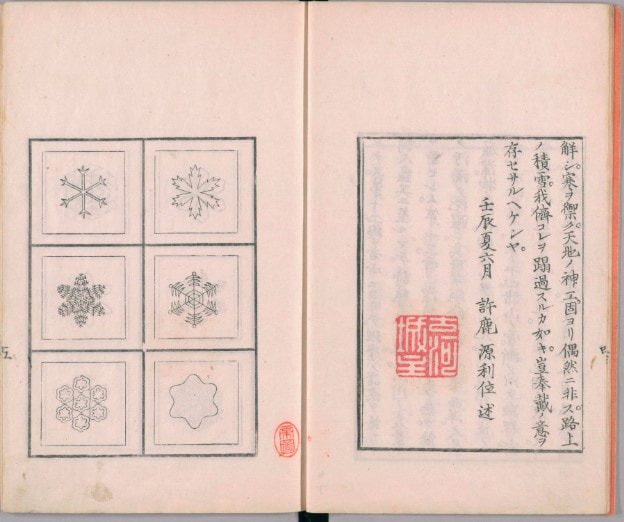
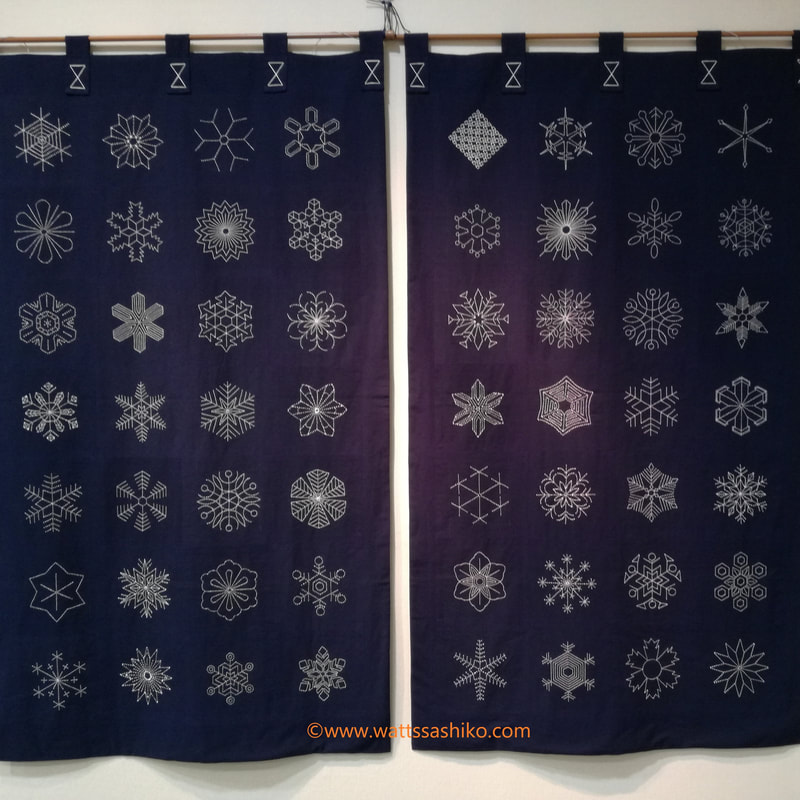
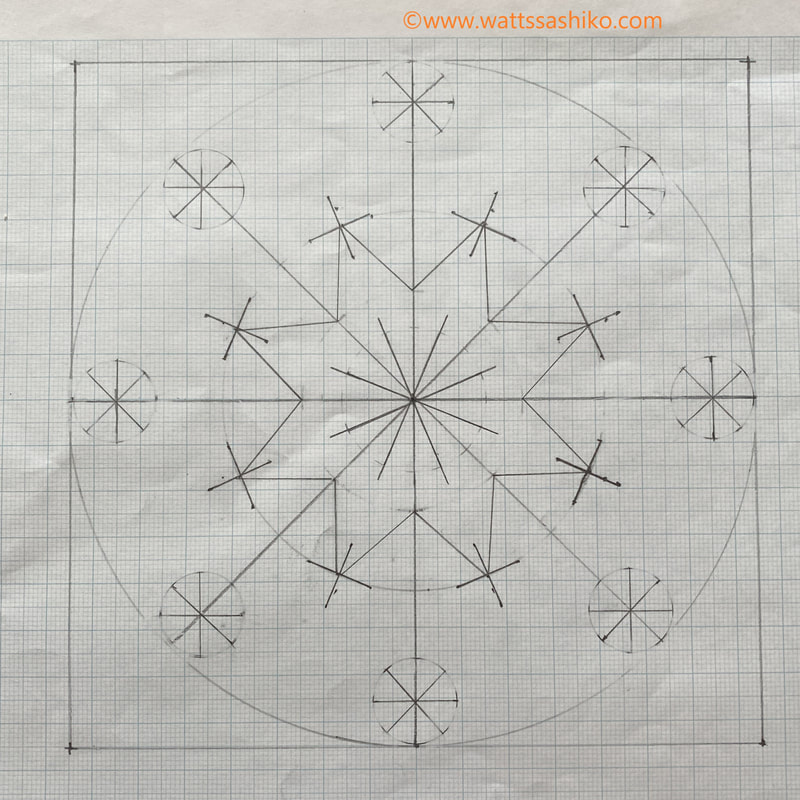
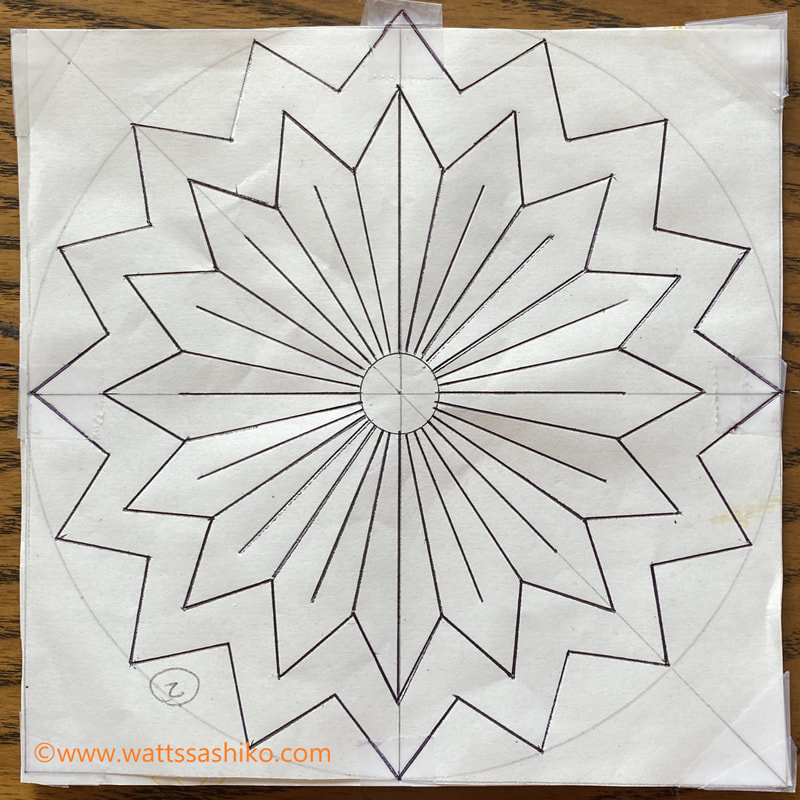
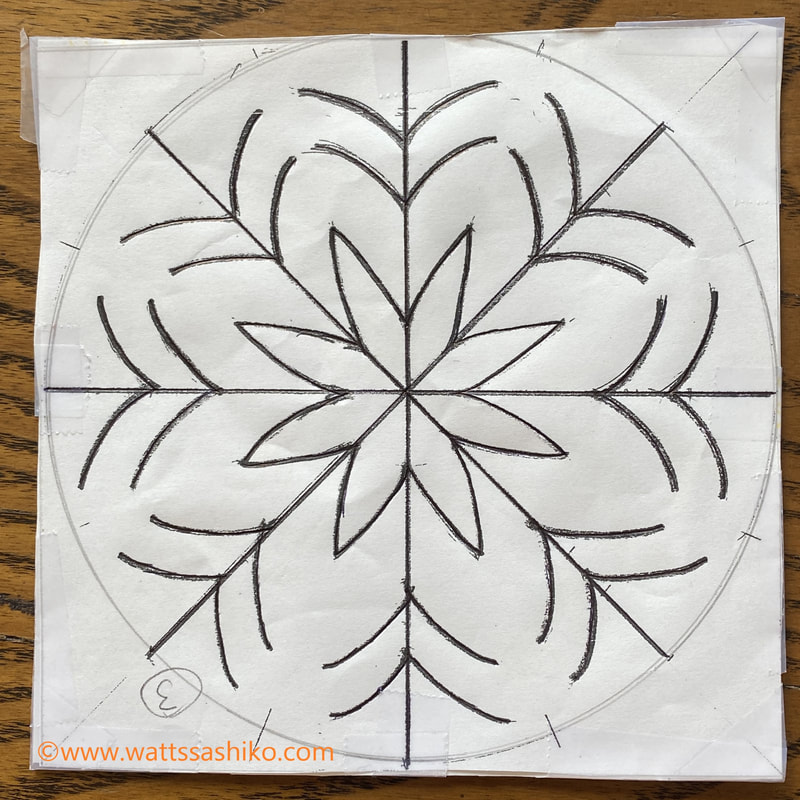
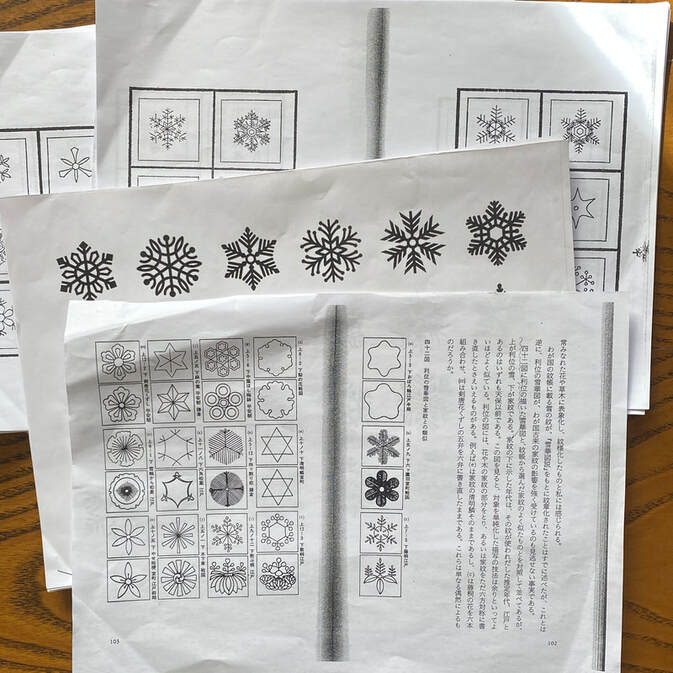
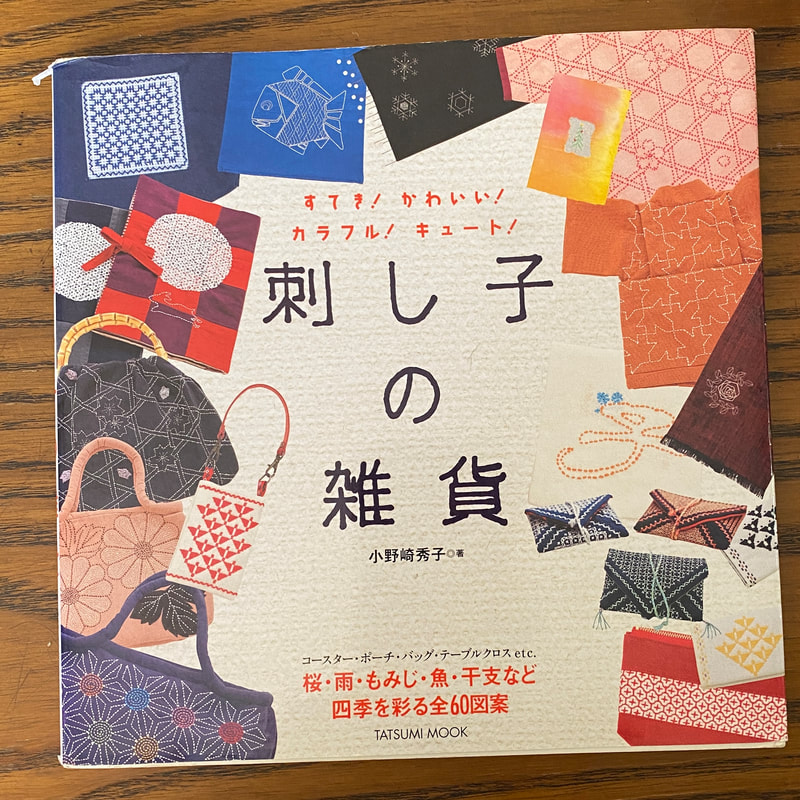
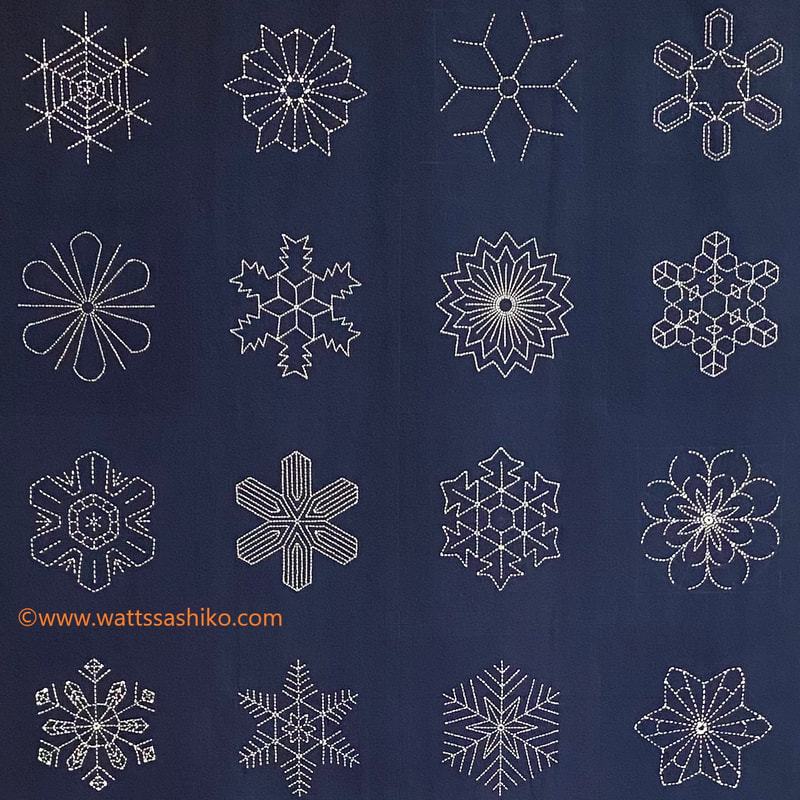
 RSS Feed
RSS Feed



